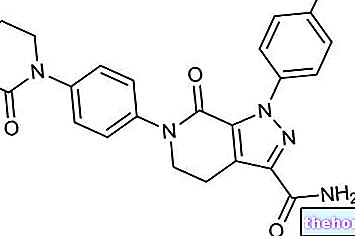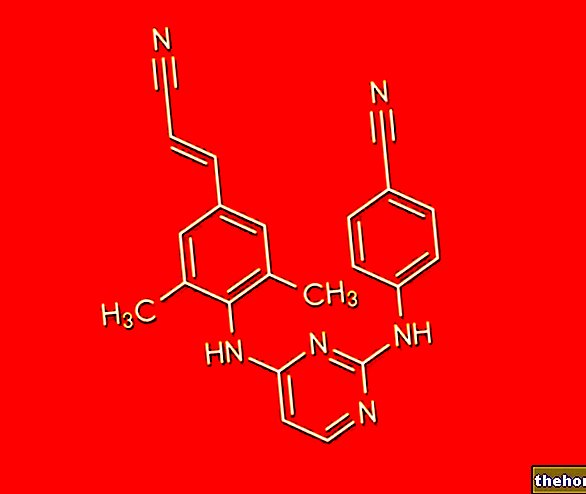REOMAX ® is a drug based on ethacrynic acid.
THERAPEUTIC GROUP: Diuretics / Diuretics with major diuretic action / Loop diuretics

Indications REOMAX ® Ethacrynic acid
REOMAX ® like all other drugs belonging to the category of diuretics, is indicated in the treatment of pathologies characterized by an increase in water retention. More precisely, it is possible to resort to the use of REOMAX ® in case of edema of cardiac or renal origin, nephrotic pathologies , cirrhosis, ascites and liver diseases, chronic renal failure and hypertension.
REOMAX ® for intravenous administration is instead selectively indicated in the treatment of acute pulmonary edema.
Mechanism of action REOMAX ® Ethacrynic acid
REOMAX ® is characterized by a very rapid absorption kinetics and an equally rapid biological effect. Taken orally, ethacrynic acid is able to act after only 30 minutes, while the timing of action drops dramatically to just 5 minutes in the case of intravenous administration. The diuretic action is completed between 2 and 4 hours, to disappear definitively approximately 6-8 hours after oral administration.
The biological effect, as a loop diuretic, is due to the ability to inhibit the sodium-potassium-chlorine cotransport at the level of the ascending branch of the loop of Henle, thus causing a reduced reabsorption of the aforementioned ions with a consequent increase in urinary secretion .
Compared to other loop diuretics, REOMAX ®, more precisely ethacrynic acid, can enhance the diuretic effect of the drug by extending its biological activity also to the distal and proximal tubules of the nephron.
Studies carried out and clinical efficacy
1. ETHACRINIC ACID AND PULMONARY EDEMA
South Med J. 2003 Nov; 96: 1148-50.
Ethacrynic acid can be effective for refractory congestive heart failure and ascites.
Alisky JM, Tuttle TF.
This study shows the therapeutic efficacy of ethacrynic acid, the active ingredient of REOMAX, in the treatment of severe pulmonary edema. In fact, the aforementioned compound was effective where the previous treatment with furosemide had failed. The study therefore focuses on "importance of" the use of ethacrynic acid as a diuretic of last resort, especially in geriatric practice.
2. ETHACRINIC ACID and ACUTE CARDIAC DECOMPENSATION
Am J Ther. 2009 Jan 8. [Epub ahead of print]
The Management of Acute Heart Failure and Diuretic Therapy.
Somberg JC, Molnar J.
One of the main therapeutic approaches to the treatment of acute heart failure is the administration of diuretics. Loop diuretics, such as furosemide or ethacrynic acid, have been shown to be particularly effective for the immediate dilation effect at the venous level, with a consequent decrease in the filling pressure of the left ventricle and a reduction in the symptoms of pulmonary congestion, which precede in the time the diuretic effect. Compared to furosemide, ethacrynic acid has the enormous advantage of the absence of sulfonamide domains, which allows its administration even in sensitive patients.
3. ETHACRINIC ACID and LEUCEMIA
PLoS One. 2009 Dec 14; 4: e8294.
Ethacrynic acid exhibits selective toxicity to chronic lymphocytic leukemia cells by inhibition of the Wnt / beta-catenin pathway.
Lu D, Liu JX, Endo T, Zhou H, Yao S, Willert K, Schmidt-Wolf IG, Kipps TJ, Carson DA.
First experimental evidences suggest ethacrynic acid as a potential anticancer drug. More precisely, the active principle used for years as a diuretic has proved capable of selectively inhibiting the development and proliferation of tumor cells in chronic lymphocytic leukemia, acting on molecular mechanisms of proliferation and apoptosis. These results, observed for the moment only in vitro, require experimental confirmation on in vivo models.
Method of use and dosage
REOMAX ® tablets of 50mg of ethacrynic acid: it is recommended to take 1 tablet per day, preferably in the morning on a full stomach.
REOMAX ® 50mg / 20ml vials of ethacrynic acid: the sufficient dose should be one vial per day, but its use is for hospital use only.
The doses of REOMAX ® must necessarily be adapted to the profile of each individual patient and to the severity of his pathology, therefore medical supervision is necessary.
Warnings REOMAX ® Ethacrynic acid
The high diuretic effect of REOMAX ® could induce profound diuresis inevitably accompanied by a significant loss of electrolytes and consequent dehydration. The effects of hypokalemia, hyponatremia and dehydration materialize in weakness, muscle cramps, inappetence, asthenia and hypotensive crisis. E " therefore it is necessary, before resorting to the use of REOMAX ® during therapy (especially if continued for prolonged times), to continuously monitor the levels of potassium, natremia, uricemia, creatininemia and lipidemia, correcting them - if necessary - before starting the therapeutic plan , to then support them during the treatment period.
Although REOMAX ® does not directly interfere with the ability to drive and use machines, as reported in the package insert, it is always necessary to consider that the possible and unpredictable hypotensive effects of diuretics could lead to a decrease in perceptive and reactive abilities.
PREGNANCY AND BREASTFEEDING
The use of the drug during pregnancy and breastfeeding is not recommended.
Interactions
REOMAX ® and more precisely its active ingredient, can cause an increase in the toxicity of drugs such as:
- Aminoglucoside antibiotics;
- Cisplatin and lithium, with an increase in the cardio and neuro-toxic effect;
- Curaro, with strengthening of the muscle relaxant action;
- High-dose salicylates;
- Mineralocorticoids and corticosteroids, with an increased risk of hypokalaemia.
Furthermore, the hypotensive and hypomineralizing effect could be enhanced by the simultaneous use of other drugs with diuretic action.
Contraindications REOMAX ® Ethacrynic acid
It would be necessary to avoid taking REOMAX ® in case of hypersensitivity to one of its components, in case of gout, anuria, hepatic precoma and digitalis poisoning.
Undesirable Effects - Side Effects
The loss of minerals and the hypotensive effects observed following the administration of REOMAX ® could cause abdominal pain, nausea, loss of appetite, dysphagia, vomiting and diarrhea.
Furthermore, at high doses, REOMAX ® could be responsible for severe dehydration and haemoconcentration, with consequent hyperuricemia, increased urinary excretion of urates and acute gout attacks.
The simultaneous administration of ototoxic drugs and REOMAX ® intravenously, in some cases resulted in reversible deafness and dizziness.
Humming of various kinds have been observed instead in patients with severe renal dysfunction.
Note
REOMAX ® can only be sold under medical prescription.
The use of REOMAX ® should always take place after consulting your doctor.
The indiscriminate use of REOMAX ® for the simple search for the loss of a few kilos exposes the body to serious side effects. Furthermore, it is always advisable to reiterate that weight loss in this case is dictated by the elimination of liquids and salts and not by a real slimming effect, intended as a loss of fat mass.
The information on REOMAX ® ethacrynic acid published on this page may be out of date or incomplete. For a correct use of this information, see the Disclaimer and useful information page.




























